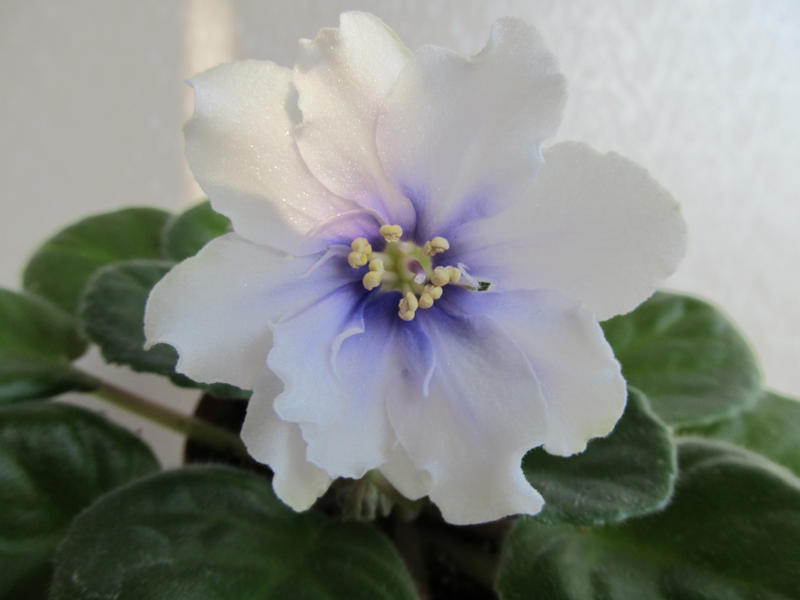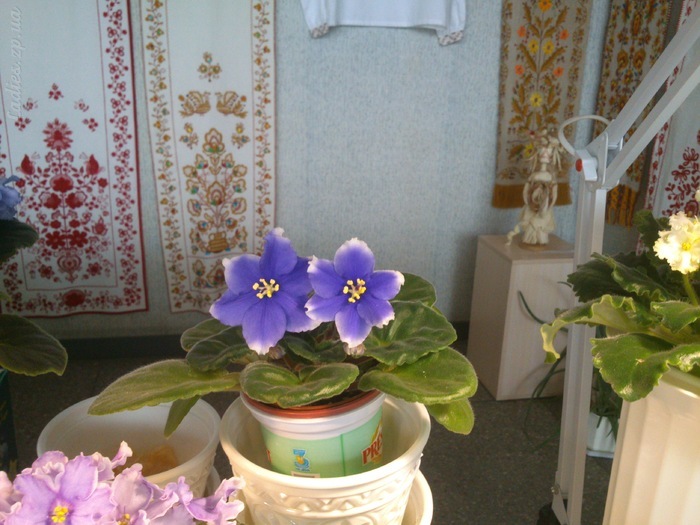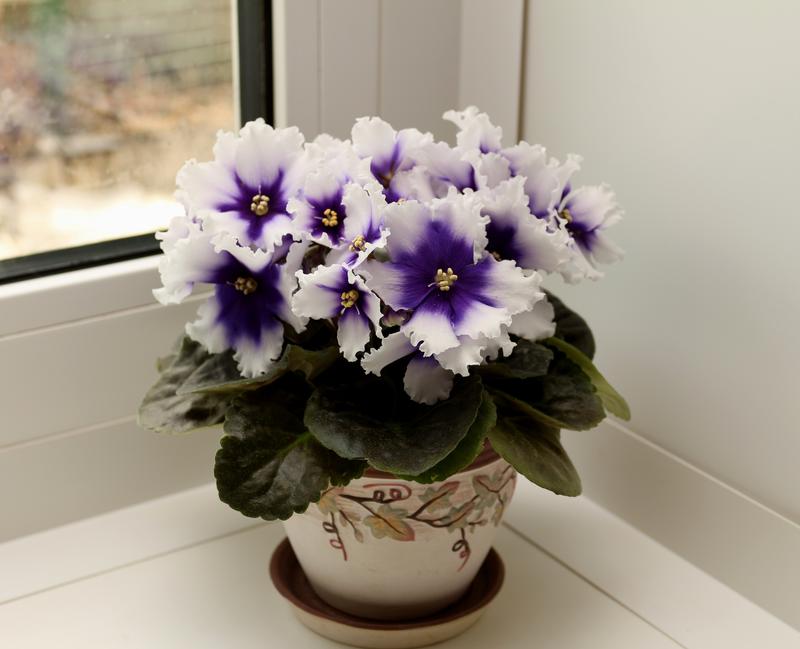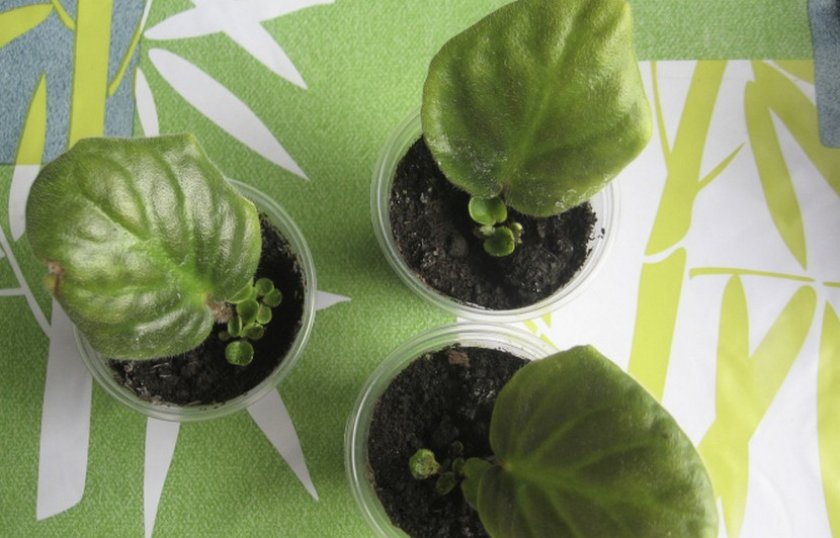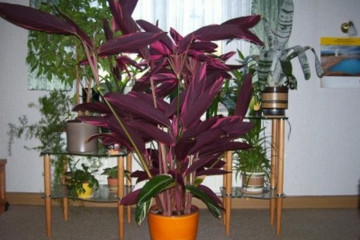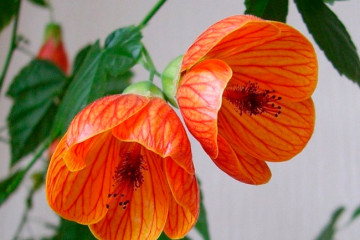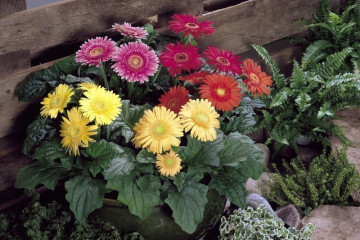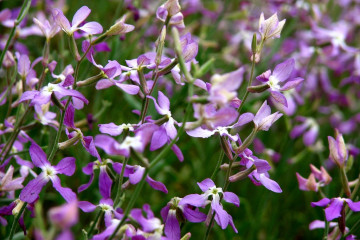Home flower violet Humako Inches
Content:
Violet is a bright flower, distributed in almost all continents of the planet. But most often one of its varieties can be found not in the wild, but in houses and apartments as an interior decoration. Many varieties of violets, differing in flower color and flowering characteristics, have the same care requirements. This makes them attractive for growing by both experienced growers and amateurs.
What does the violet Humako Inches look like?
The violet Humako Inches is the most common among indoor flower lovers. This is due to its extraordinary beauty: the combination of snow-white edges of the petals with a blue-violet core stands out brightly against the background of light green leaves. The rosette of leaves looks neat and compact, framing multiple peduncles.
Due to the small villi located along all the leaves of the plant, as well as the velvety surface of the petals, the violet is covered with a lot of sparkling sun glare. This effect makes the flower even more decorative.
In nature, plants of this family can reach a height of 30 cm, but indoor varieties are much smaller in size.
About the history of appearance
For the first time, the violet was found in the mountains of East Africa, therefore the variety is often referred to as Uzambar by the name of the mountains.
The scientific name of the genus of violets is saintpaulia. The word comes from the German language, derived from the surname of Baron Saint-Paul, who first found the most beautiful flower. His breeder friend immediately bred the first home Saintpaulia, which in just a few decades won the love of flower growers all over the planet and became the progenitor of modern varieties of violets.
Features of caring for Humako Inches at home
Violet Humako Inches is popular among indoor plant lovers also because it does not need to be looked after in a special way. Unpretentiousness in combination with a long flowering period and extraordinary beauty of flowers makes almost all varieties of Saintpaulias a very successful home plant.
Temperature
The optimal temperature range for Saintpaulias is from 18 ° C to 24 ° C. In winter, the air should not be cooled to less than 10 ° C.
Too high indoor temperatures can slow down plant development and prevent flowering. Low temperatures, even short-term ones, can destroy the flower.
Lighting
The correct arrangement of the flower in the room will make caring for it 50% successful. The place should be sufficiently lit, while not in direct sunlight.
The duration of flowering and the breeding success of Saintpaulia depend on the quality of lighting. Diffused light must be present in the room for at least half a day. If the flower is located on the south window, it is worth taking care of curtains or a mosquito net to protect it from the scorching rays.
In the winter season, if the sun is not enough, it is worth taking care of special artificial lighting using phyto-lamps. Another option is to move the flower to a lighter room.
Watering
As with other indoor plants, water at room temperature for at least 12 hours should be used to water Humako violets.
When determining the watering regime for your violets, it should be borne in mind that the soil under the flower should be sufficiently moist, but not too damp. In this case, it is important that water does not fall on the leaves and petals of the plant, as in this case, rotting may begin.
In winter, when the temperature in the room is lower, watering is carried out only after the top layer of soil under the plant has dried.
Spraying
Spraying to increase air humidity cannot be used for violets. As mentioned above, moisture on the outlet or flowers can cause the plant to rot.
In addition, drops of moisture on violet leaves are an excellent breeding ground for various pests.
Humidity
50% humidity in the room will be optimal for Saintpaulia. In the hot summer season or when the central heating is on in winter, the air can become arid for the flower. This can be remedied by using a pallet of damp pebbles under the Humako Inches violet pot.
Priming
The soil for growing and keeping violets should contain peat and sand. At the same time, at the bottom of the container, it is necessary to make a drainage layer of fine expanded clay or sphagnum moss. The easiest way to find the right soil for violets is to choose a ready-made balanced mixture at a florist shop.
Top dressing
In spring and summer, violets require regular feeding (optimally 2 times a week). For this, a mineral dressing is suitable, diluted according to the scheme 2 g per 1 liter of water.
Before flowering, the use of dressings is increased to affect the number of flowers and their lifespan.
When and how it blooms
The flowering period for violets of this variety is quite long - about nine months (from early spring to late autumn). Old inflorescences disappear, new ones immediately bloom in their place.
The petals of this flower can be double (for example, as in the Humako Pink variety) or semi-double, forming a flower up to 8 cm in diameter. Violet seeds appear after flowering in miniature boxes.
Experts note that Saintpaulia Humako has a twin variety. It differs in smaller flowers and wavy edges of the petals. The original hybrid has large, even petals. It is noteworthy that it is Humako Inches 2 (or Humako Inches Nouname) that is most often found in flower shops, and not the original variety.
In the hot season, in the flowers of the Humako Inches variety, the blue-violet core increases, and the white color on the petals becomes less. When it gets colder, on the contrary, the petals whiten a little.
How to propagate a violet Humako Inches
There are two ways to propagate this variety of violets: by seeds and cuttings. Growing from seeds is extremely rare at home.Most likely, a florist will not even find them in regular florist shops. The plant requires increased care at different stages of growing, so it is easier to take a cutting from a healthy adult plant.
Description of cuttings of violets:
- A strong leaf is taken from the mother plant from the lower tier of the rosette.
- The leaf is cut at an angle, the cut point on the flower is treated with activated carbon.
- The cut leaf is placed in a container (preferably dark glass) with water at room temperature.
- After 1.5-2 months, roots appear at the cut, and the leaf can be planted in the soil.
Experienced flower growers root violet leaves in moist sphagnum moss or directly in the ground.
If you competently approach the care of a room violet, it will decorate the house with its lush flowering for almost a whole year. This plant is unpretentious, but loves regular attention and care.

